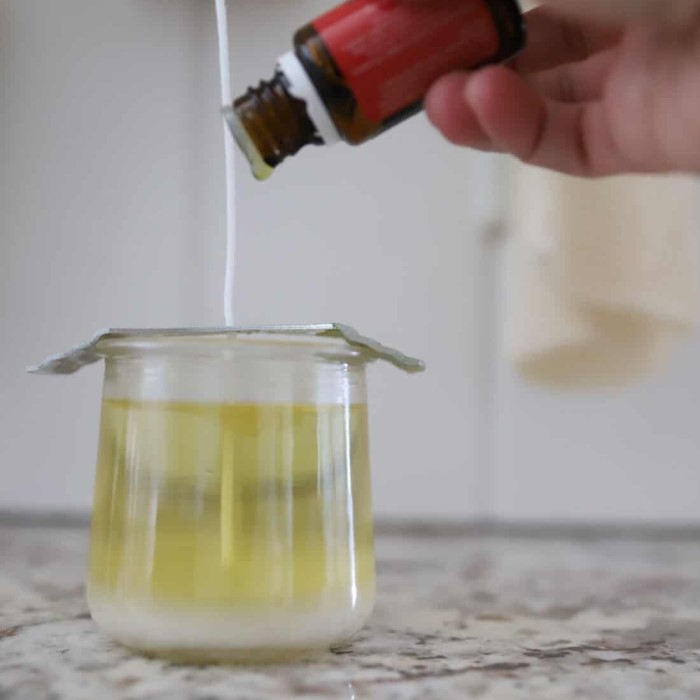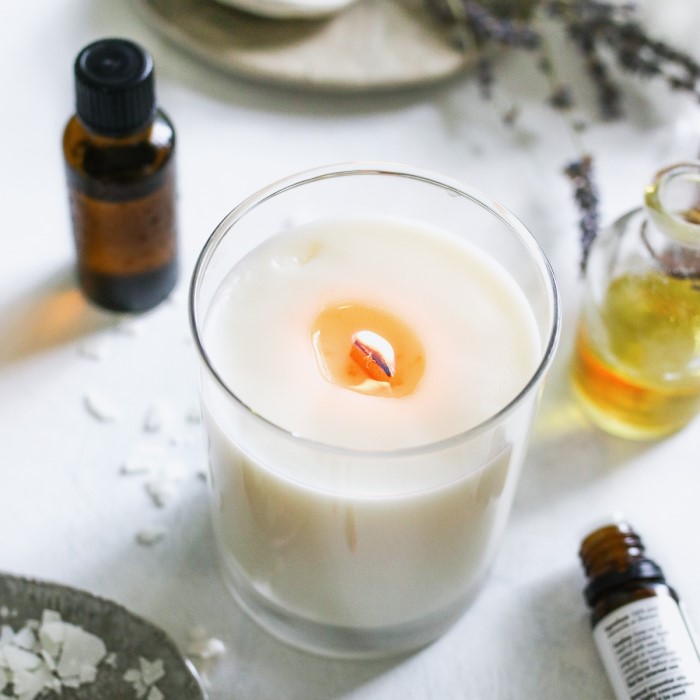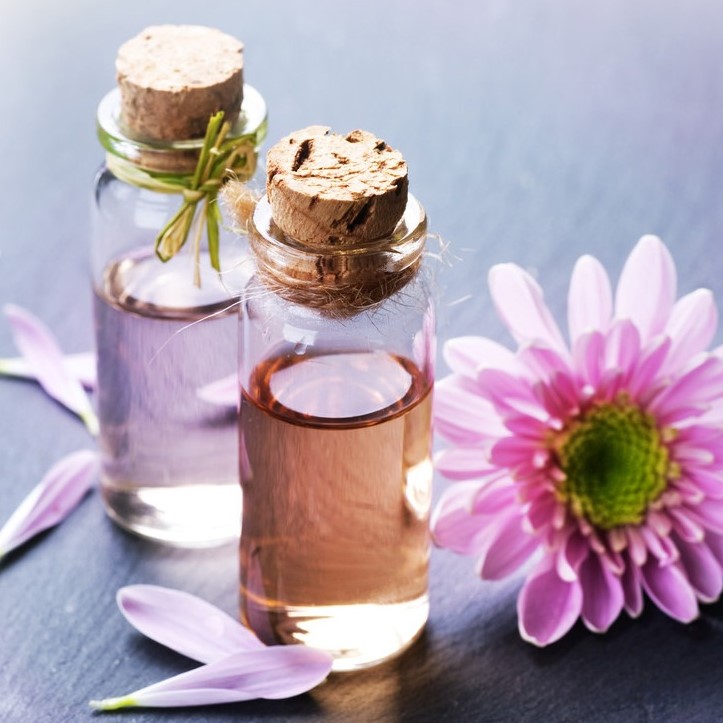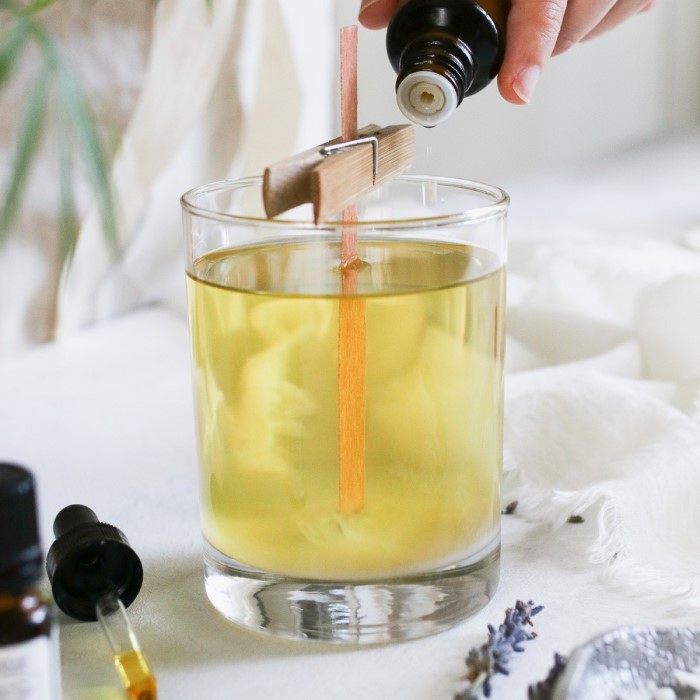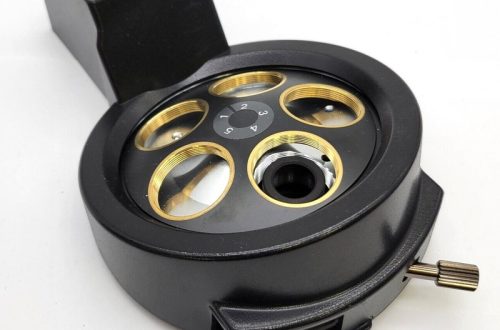Introduction: The Importance of Essential Oils in Candle Making
Creating your own scented candles is a popular craft enjoyed by many and offers a rewarding way to personalize your living space. One crucial question often arises among both novice and experienced crafters: how much essential oil to add to candle for maximum scent? Understanding the right quantities of essential oils is key to achieving vibrant fragrances that enhance ambiance without compromising the quality of your creations. Using essential oils not only brings delightful aromas into your life but can also provide therapeutic benefits associated with aromatherapy.
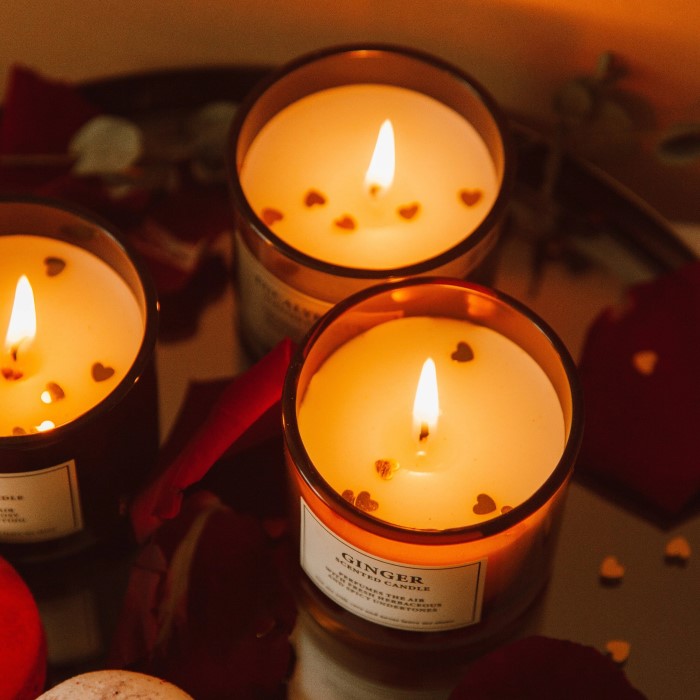
In this article, we will explore the intricacies of using essential oils in candle making, provide specific guidelines on how much to add, discuss key factors that influence scent strength, and offer practical tips for successful crafting. Armed with this information, you can confidently embark on your candle-making journey and fill your home with beautifully scented creations.
Understanding Essential Oils: What They Are and How They Work
The Nature of Essential Oils
Essential oils are natural extracts derived from various parts of plants, including leaves, flowers, roots, and bark. Each oil carries its own unique aroma and properties, influenced by the plant’s composition and environmental conditions. These oils can not only elevate the fragrance of your candles but also infuse your creations with the potential benefits associated with each oil.
- Aromatic Properties: Essential oils provide rich, natural scents that can evoke emotions and memories. For example, lavender is often associated with tranquility, while citrus oils can uplift mood and energy levels.
- Therapeutic Benefits: Many essential oils are used in aromatherapy for their calming and invigorating effects, offering potential physical and emotional health benefits when used in candles.
The Benefits of Using Essential Oils in Candle Making
Natural Scent
When it comes to candles and other scented products, the choice of fragrance can significantly impact the overall experience.
- Organic Composition: Essential oils are derived directly from plants, capturing their natural essence without the need for synthetic additives. This organic composition results in a more authentic and pleasing aroma.
- Fuller Aroma Profiles: Unlike synthetic fragrance oils, which often replicate single scents, essential oils provide a well-rounded and complex fragrance profile. This depth can evoke more profound emotional responses and enhance the sensory experience.
- Health Considerations: Many consumers are becoming increasingly health-conscious, making natural options enticing. Essential oils typically lack harmful chemicals found in synthetic fragrances, such as phthalates and parabens, making them a safer choice for home environments.
- Therapeutic Benefits: Beyond scent, many essential oils possess therapeutic properties associated with aromatherapy. For example, lavender is known for its calming effects, while citrus oils can energize and uplift mood. This functional aspect adds an extra dimension to their appeal.
Customization
The versatility of essential oils provides a unique opportunity for customization that allows individuals to express their personal style.
- Endless Combinations: By leveraging the wide variety of essential oils available, crafters can create countless fragrance combinations. This enables you to mix and match oils to achieve your desired scent, tailored specifically to your preferences.
- Personal Signatures: Many individuals enjoy developing signature scents that reflect their personality or evoke specific memories. For example, a blend of citrus and mint might represent freshness and energy, while a combination of sandalwood and vanilla could evoke warmth and comfort.
- Seasonal Variations: Customization allows for seasonal adaptations, creating unique candle scents for different times of the year. Cozy cinnamon and nutmeg blends are perfect for winter, while refreshing eucalyptus and lemon are ideal for warmer months.
- Creative Freedom: The process of experimenting with essential oils helps foster creativity. Crafters can enjoy the journey of exploring various combinations, leading to personalized experiences that are joyful and fulfilling.
Eco-Friendly
As environmental concerns gain prominence, consumers are increasingly inclined towards eco-friendly options, and essential oils fit the bill perfectly.
- Sustainable Sourcing: Essential oils are derived from renewable plant resources, making them a sustainable choice in comparison to synthetic fragrances that are often petroleum-based. Many reputable companies emphasize sustainable harvesting practices to protect ecosystems.
- Biodegradability: Natural essential oils are biodegradable, meaning they break down more easily in the environment compared to synthetic fragrances, which may contain non-biodegradable compounds that persist and accumulate.
- Reduced Toxicity: Using essential oils reduces the release of harmful toxins into the air. Unlike synthetic scents that can off-gas potentially hazardous substances, essential oils contribute to cleaner indoor air quality, making homes healthier.
- Consumer Responsibility: Choosing essential oils reflects a commitment to environmentally conscious living. By opting for natural ingredients, consumers actively participate in reducing their ecological footprint, supporting an industry that prioritizes planetary health.
How Much Essential Oil to Add to Candle?
General Guidelines for Adding Essential Oils
Determining how much essential oil to add to candle requires understanding proportions based on the wax type and the desired scent intensity. A good rule of thumb is to use approximately 6% to 10% of the wax weight in essential oils.
- Calculating the Amount:
- For 100 grams of wax, add between 6 to 10 grams of essential oil for a strong fragrance.
- For example:
- A 4 oz (approximately 113 grams) candle may require around 7 to 11 grams of essential oil.
- An 8 oz (approximately 227 grams) candle typically needs between 13 to 23 grams of essential oil.
- Personal Preference: Ultimately, the right amount may depend on your scent preference. If you enjoy stronger aromas, consider adding towards the upper end of the guidelines. If you prefer a subtle scent, aim towards the lower end.
Adjusting for Different Types of Wax
The type of wax used in candle making can significantly affect how much essential oil should be added. Each wax type may have different fragrance-loading capacities:
- Soy Wax: Soy wax can typically hold up to 10% fragrance. It blends well with essential oils, making it popular among candle makers.
- Paraffin Wax: This traditional wax often holds 6% to 8% fragrance oil and can burn more quickly than soy, so adjust accordingly.
- Beeswax: While all-natural, beeswax generally holds less fragrance, around 3% to 6%, so keep this in mind.
- Palm Wax: Similar to soy, palm wax can accept higher fragrance loads, usually between 6% and 10%.
Understanding the interaction between wax and essential oils can greatly enhance your results.
Tips for Crafting Perfectly Scented Candles
Choosing Quality Essential Oils
- Select High-Quality Oils: When using essential oils, quality is key. Choose pure, therapeutic-grade oils devoid of additives or synthetic scents to achieve desired results.
- Experiment with Blends: Mixing various essential oils can create unique fragrances that are complex and appealing. For instance, combining eucalyptus and peppermint can result in a soothing yet invigorating scent.
Timing Your Additions
- Add Oils at the Right Temperature: For the best scent release, mix essential oils into your melted wax when the temperature reaches approximately 185°F (85°C). This allows the oils to properly combine with the wax.
- Stir Thoroughly: Ensure the oils are well dispersed by stirring gently yet thoroughly after adding them to the wax. This helps achieve a uniform scent throughout the candle.
The Science of Scent Throw: Cold vs. Hot
Understanding the concept of scent throw is crucial when working with candles.
- Cold Throw: This is the aroma you experience while the candle is unlit. It gives you an idea of how the candle will smell when unused.
- Hot Throw: This is the scent released while the candle burns. Many factors influence the hot throw, including the amount of essential oil, the type of wax, and the size of the wick.
To ensure you get both cold and hot throws right, experimentation is beneficial. Keep notes on what combinations provide optimal scent outputs so you can replicate your best successes.
Additional Considerations for Candle Making
Environment and Tools
- Control Your Environment: It’s essential to work in a space free of drafts or temperature fluctuations. These conditions can affect how the wax melts and, in turn, how well it combines with essential oils.
- Using Proper Tools: Invest in quality candle-making tools, such as thermometers, mixing spoons, and scales, to ensure precision in every step of the candle-making process.
Frequently Asked Questions
What is the 20 30 50 rule for essential oils?
The 20 30 50 rule pertains to the recommended dilution ratios for using essential oils. It is primarily used for topical applications and not specific to candle-making.
What is the 84 rule in candle making?
The 84 rule in candle making suggests that for every 100 grams of wax, only 8 grams of fragrance, or 8% of the total weight, should be used to maintain good burn quality.
How much essential oil per 100g of soy wax?
For soy wax, the typical amount of essential oil is between 6% and 10%. Therefore, you would want to use about 6 to 10 grams of essential oil per 100 grams of soy wax for optimal results.
Conclusion: Crafting Your Ideal Scented Candle
In conclusion, knowing how much essential oil to add to candle is essential for crafting high-quality, aromatic candles. By understanding the relationship between essential oils, wax types, and proper techniques, you can create delightful scents that enhance your personal space.
As home fragrance continues to trend in 2025, mastering the art of candle-making can open up new opportunities for creativity and self-expression. With the information provided in this article, you can confidently experiment with essential oils and achieve the perfect aromatic candles tailored to your preferences. Embrace the joy of candle crafting, and let your creativity shine through beautifully scented creations! Happy candle making!
